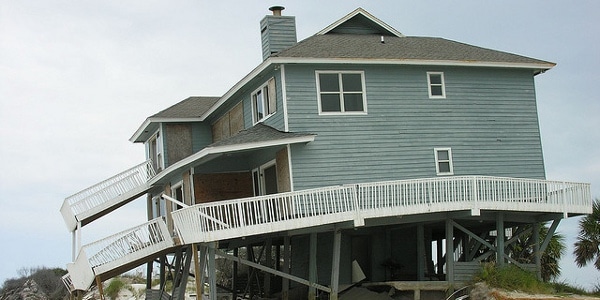When you’re buying a property, be aware of illegal building – ie. illegal additions or modifications to a property. They could cost you lots of money and stress!
With around 30% of buildings inspected by Archicentre architects having some kind of illegal additions, illegal building is a common risk for home buyers.
During the life of a property, its owners may have:
- Undertaken work on wiring or plumbing without using a licensed professional, or
- Made additions to the property (think gazebos, lean-tos, etc) or removed walls within the property, without Council approval.
If so, the property has been subject to illegal building. Don’t have the purchase of your dream home turn into a nightmare – get educated about the risks and solutions!
Here’s three things home buyers need to know about illegal building:
1. They’re risky
Unapproved alterations are against the law for a reason – they’re dangerous!
Dodgy work by an unlicensed person can cause big problems with a home. For example:
- Faulty plumbing can cause damp and mould to spread through a wall, or
- Removal of a load-bearing wall during unapproved renovations can cause a sagging roof.
Structures (such as gazebos) that don’t have council approval are simply illegal, even if they seem structurally fine. Councils can request demolition of unapproved extensions.
4. You’re accountable
Once you settle a property with illegal additions, it becomes your problem. (Sure, there is recourse on the seller, but enforcing this could end up in a costly and lengthy legal battle.)
That means you may have to fix the issues yourself, or become accountable for any incident occurring as a result of the dodgy work.
Specifically, once you own a home you become legally liable for any injuries to your visitors (including tradespeople) that suffer injury as a result of the illegal additions.
3. There’s no easy fix
Unfortunately for some buyers, councils may not provide retrospective approval for extensions! Approval should be sought before the building occurs.
Not to mention that the results of illegal building, such as damp walls or sagging roofs, are difficult and expensive to fix.
Depending on the nature of the alterations, you may need to repair:
- foundations,
- plumbing,
- wiring, and
- the roof frame.
Repairing someone else’s mistakes can be very costly, so it’s wise to identify illegal building before purchasing a home.
The solution
There’s a few things you can do to reduce your risk of inheriting a big problem:
- Include a special condition on the Offer and Acceptance specifying that the contract is dependent on the positive results of a building inspection, then
- Carry out a building inspection to identify any problems with the home – including the presence of illegal additions. Use a professional to do this.
If you’re willing to buy a property knowing that it has some kind of illegal building, you can use the building inspection to negotiate a fair deal – for example, a lower price, or an agreement that the seller will remedy the problems.
But whatever you do, don’t wait until settlement (or later) to find out about illegal building!
Image by Judy Baxter via Flickr.


